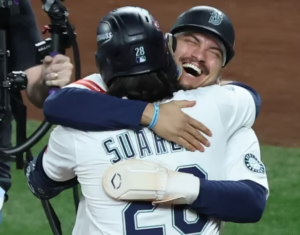Cybersecurity has become one of the most critical issues in today’s digital world. It refers to the practice of protecting computers, networks, devices, and data from cyberattacks, unauthorized access, or damage. As technology grows more advanced and connected, the risks to information security also increase. Cybersecurity is essential for individuals, businesses, and governments to keep their information safe and maintain trust.
The importance of cybersecurity lies in its ability to prevent cyber threats that can cause serious harm. Cyberattacks such as hacking, phishing, ransomware, and malware can steal sensitive data, disrupt services, and lead to financial losses. Protecting personal information, financial records, intellectual property, and government secrets is a top priority. Without strong cybersecurity measures, these valuable assets become vulnerable to criminals and hostile nations. Maintaining good cybersecurity helps businesses and governments ensure smooth operations and keep their customers and citizens confident in their safety.
Cyber threats come in many forms. Malware is one of the most common and includes viruses, worms, trojans, and ransomware. These programs can damage devices, steal data, or lock users out until a ransom is paid. Phishing attacks trick people into revealing passwords or credit card details through fake emails or websites. Denial of Service (DoS) attacks overload systems to make them unavailable to users. Other threats like Man-in-the-Middle attacks intercept communication between parties, and zero-day exploits target unknown software vulnerabilities before they can be fixed.
To defend against these risks, cybersecurity involves many areas of focus. Network security protects the connections between computers from intruders. Information security focuses on safeguarding the privacy and accuracy of data. Application security ensures that software programs are free from weaknesses. Endpoint security protects individual devices like laptops and phones. Cloud security secures data and applications stored online. Operational security includes the rules and processes that keep data safe from unauthorized access.
Organizations use various tools and methods to strengthen cybersecurity. Firewalls act as barriers between trusted and untrusted networks, blocking suspicious activity. Antivirus and anti-malware software detect and remove harmful programs. Encryption converts data into coded formats, making it unreadable without the correct key. Multi-factor authentication adds extra steps to verify user identities, making unauthorized access harder. Intrusion Detection and Prevention Systems monitor traffic for threats and respond quickly. Security Information and Event Management collects and analyzes data in real-time to spot problems. Patch management keeps software updated to close security gaps.
Despite these measures, cybersecurity faces many challenges. Cybercriminals constantly develop new techniques to bypass defenses. There is a global shortage of skilled cybersecurity professionals to manage these threats. Modern networks and cloud systems grow more complex, creating more possible entry points for attackers. Insider threats, where trusted employees misuse access, also pose risks. Additionally, organizations must comply with strict data protection regulations like GDPR and HIPAA, which require careful handling of personal information.
Cybersecurity plays a crucial role in global security and defense. Nations use cyber tools for espionage and warfare, targeting critical infrastructure such as power grids, communication networks, and military systems. Protecting these assets is vital to national safety. Alliances like NATO focus on improving joint cyber defense capabilities to face growing threats from hostile countries. The increasing role of cybersecurity in defense highlights its importance beyond just the private sector.
Recent trends in cybersecurity show a shift toward advanced technologies and new security models. Artificial intelligence and machine learning are being used to detect and respond to threats faster and more accurately. The zero-trust model, which assumes no user or device is automatically trusted, is gaining popularity to prevent breaches. Cyber insurance is growing as a way for companies to protect themselves financially against cyber risks. Privacy concerns are pushing stronger laws and better data protection practices. The rise of the Internet of Things (IoT) creates new challenges as billions of connected devices need to be secured.
As digital threats continue to evolve, cybersecurity remains a vital field to protect people, organizations, and nations. It is a complex and ever-changing landscape that requires constant attention and innovation. Staying ahead of cyber risks is necessary to ensure a safe and secure digital future.







